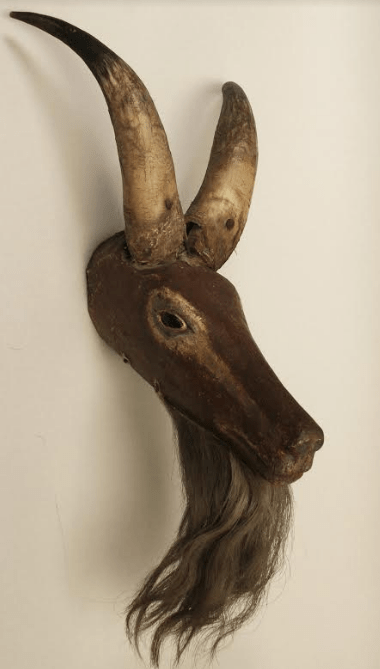Back Home by Chris Hardie
- Download this column as a Word document
- Download the photos that accompany this story
- Chris Hardie’s headshot
Nothing is wrapped in family tradition as much as the culture of Christmas.
I have Norwegian ancestry from my father’s family and my grandmother enjoyed baking kringla, rosettes, krumkake and other Scandinavian treats for the holidays. My great aunt would always cook up a batch of lefse to be enjoyed at the holiday meals.

There was one Norwegian holiday tradition that I never took part in though — julebukking. The “Christmas buck” has its roots in pre-Christian pagan times when someone would dress up as a goat, pretend to get sacrificed and come back to life when Thor revived them.
Even after Christianity came to Norway in the 11th century, Thor’s goats became the yule goat or the Christmas buck. What started as a pagan holiday tradition evolved into what could best be described as a Norwegian Halloween party in December.
Julebukking involved dressing in a disguise with a group of friends and going to houses in the neighborhood. The julebukkers would sing or householders would have to guess who was hidden behind the disguise. To keep the party going, sometimes at least one member of the household would have to join in as the group caroused through the neighborhood.
Did I mention alcohol? Julebukkers were often treated to candy or alcohol. I remember my dad telling of one julebukking when they stopped at a farm where a gallon of rather strong homemade wine emerged. Apparently, the wine was gone before they got to the next stop and the julebukkers became a rather merry bunch.
Dad also said he remembers a knock on their door one December night and my grandmother — who had a sing-song lilt to her voice when she got excited — proclaimed, “Keith (my grandfather’s name), there are julebukkers!” She opened the door, and the party began.
The tradition has mostly died out with the subsequent generations, but I asked my cousin who lives in Norway if anyone still julebukks. He said he always used to don a nisse mask and bring a bottle of aquavit (a distilled spirit) to his neighbors’ houses. Apparently, the tradition ended when the wives decided that having a glass at each of the 10 to 12 houses they visited was a bit too much.
I’m somewhat surprised the tradition didn’t live on in Wisconsin, where we don’t need much of an excuse to drink.
Goodbye Northfield goat
Speaking of goats, in May 2020, I wrote a column about the famous celebrity of Northfield — Betsy the goat.
Passersby on I-94 sometimes spotted Betsy along the cliffs near the 100-mile maker about two miles southeast of town.
Concerned citizens have called 9-1-1, but whenever anyone got near the goat, it scrambled up the rocky ledge. Other motorists took photos or videos of the goat and have posted them on a Facebook page (@northfieldgoat) for the Northfield Goat of Jackson County, Wisconsin.
The goat, which belonged to a local man and had escaped captivity in 2018, was first spotted hanging out on the rock ledges the following year and into 2020.
That was the last time that Betsy was seen, according to a Nov. 27 Facebook page post.
“Unfortunately, it has been well over a year since anyone has provided any sighting of Betsy. She has either moved on, been placed into captivity, or has passed away. There is no record of her being hit by a vehicle on I-94 or within the county. We may never know what happened to her. If any sightings come through, then you will be one of the first to know.”
Betsy lives on — for a while anyway — with memories and photos on social media.
Chris Hardie spent more than 30 years as a reporter, editor



